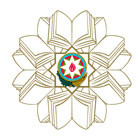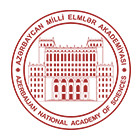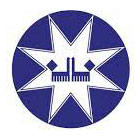Craftsmanship and performance art of the Tar, a long-necked string musical instrument
The name of this string musical instrument means “string, thread”. And perhaps, this name was assigned to it intentionally, because when the musician’s hand touches the string, a virtuoso in the audience’s souls responds to the magical, wonderful sound it generates which sometimes awakens hidden strings they had not explored before.
Tar brilliantly conveys all the richness of sound reflecting both Oriental and European classical music. Without him, it would be impossible to express the musical and philosophical content of Azerbaijani mugham. As if God himself created the inseparable connection in which tar reveals the philosophical glory and beauty of mugham by translating it into music. This is evidenced by performance history of prominent Azerbaijani masters of the tar, who captivated the public with the sound of this oriental instrument before the most diverse audience on world stages. Experts explain this phenomenon in several ways: “ perfection of tar’s design; twisted strings, which transmit all the elements of folk melodies, especially mugham; the 5 frets on the fretboard of the instrument which correspond to the structure of mugham; bass strings exclusively used during their performance; wide range; melodiousness; possibility of performing polyphonic chords; virtuoso passages; gradation of shades.” The sound of the tar is clearly affected by the quality of mulberry and walnut wood which the tar is carved from, how properly they are dried, and how strictly manufacturing stages are observed. It depends to a large extent on the talent, experience and intuition of the master making the tar, on his sense of music, and love for his work. These qualities allow the use of the tar as a solo, accompanying instrument.
At a certain period, tar had five strings (two white, two yellow and one bass), large and deep body on the long neck of which were tied 27-28 frets. Due to its heaviness, the tar was kept either on the knees or lower chest during performances. Certainly it produced a different sound from the one we hear today, but there was something in its imperfect tones (specialists say it was gentle and quiet) which allowed the tar to stand the test of time. In the 1970s, a prominent Azerbaijani musician and master of the tar, a native Karabakh (Shusha), Mirza Sadigh Asad oglu (1846-1902), also known as Sadighjan made a real revolution of the tar which he had a great talent for.
Sadighjan introduced a number of important innovations to the structure of the tar. Those changes affected the body, strings and frets of the instrument. First he increased the number of strings to 18, then reduced them to 13. He left 22 strings on the neck of the instrument. The neck was attached to a bulge on the body of the instrument to avoid deformation. Inside the bulge he installed a wooden brace. He also reduced the depth of the body, straightened the sides, thereby extending the upper part of the body and increasing the power of sound. These and other changes reduced the weight of the tar which made it possible to hold the instrument against the chest without bending down. Most importantly, the reconstruction affected the quality of the sound of the instrument, its timbre. “Azerbaijani tar” began to gain popularity in the Orient, and Sadighjan, besides being a talented tar performer, was now known everywhere as the “father of the Azerbaijani tar”.
In the late ‘20s, to ensure a sustainable setup of the instrument, the number of strings was reduced to eleven. In the 30s, the fear of abandoning the tar began to spread after the Soviet leadership began persecutions against national culture, national instruments, especially the tar and the kamancha, and a wide discussion was launched by the press on this subject. Only the intervention of the great Uzeyir Hajibeyov saved the tar from the bitter fate. “The tar is the most valuable and important among musical instruments to give to the Oriental musical education its span”.
In the ‘20s-‘30s of the last century, Uzeyir Hajibeyov managed to preserve the use of the tar when speculations of Soviet authorities to abandon it altogether sparked widespread discussion. Higher and secondary specialized educational institutions and music schools began to offer tar lessons. The tar ranked first in the orchestra of folk musical instruments established in 1931 by Uzeyir Hajibeyov. The school of national instruments performance based on notes founded by him further expanded technical and artistic potential of the tar. As the leading instrument in the mugham trio (tar, kemancha, gaval) tar played a crucial role in the development of the art of mugham. In Hajibeyov’s mugham operas (“Leyli and Majnun”, “Asli and Karam”) vocal pieces were accompanied by the tar. This unique instrument continues to play a significant role in the art of Azerbaijani mugham to date, both as a part of the mugham trio and as a solo.
Tar is one of the few national instruments for which famous Azerbaijani composers wrote music, concerts and orchestras.
At the seventh session of the Intergovernmental Committee for the Safeguarding of the Intangible Cultural Heritage, which was held from 3 to 7 December 2012, “Craftsmanship and performance art of the tar, a long-necked string musical instrument” was included on the Representative List of the Intangible Cultural Heritage of Humanity.
















